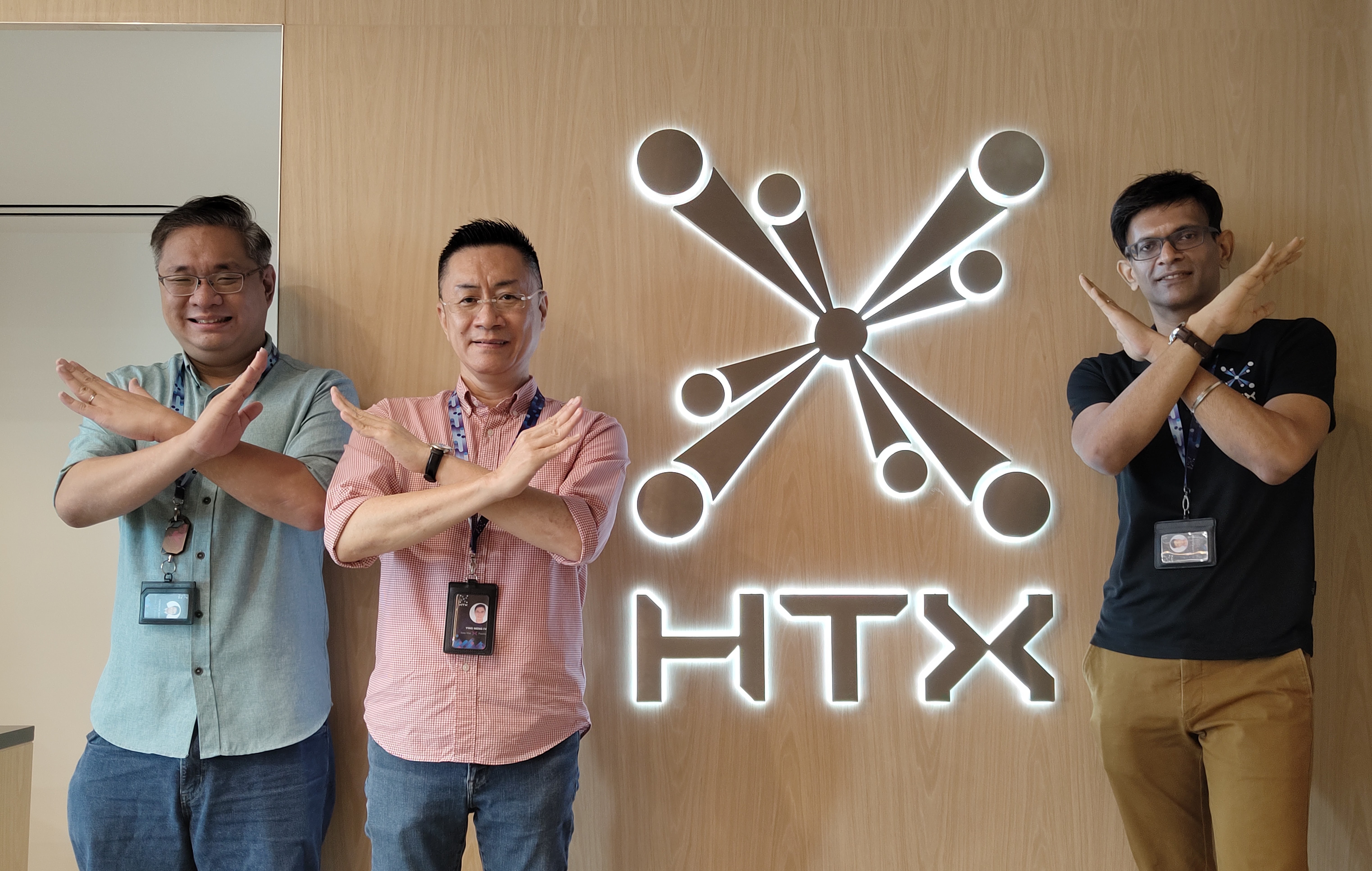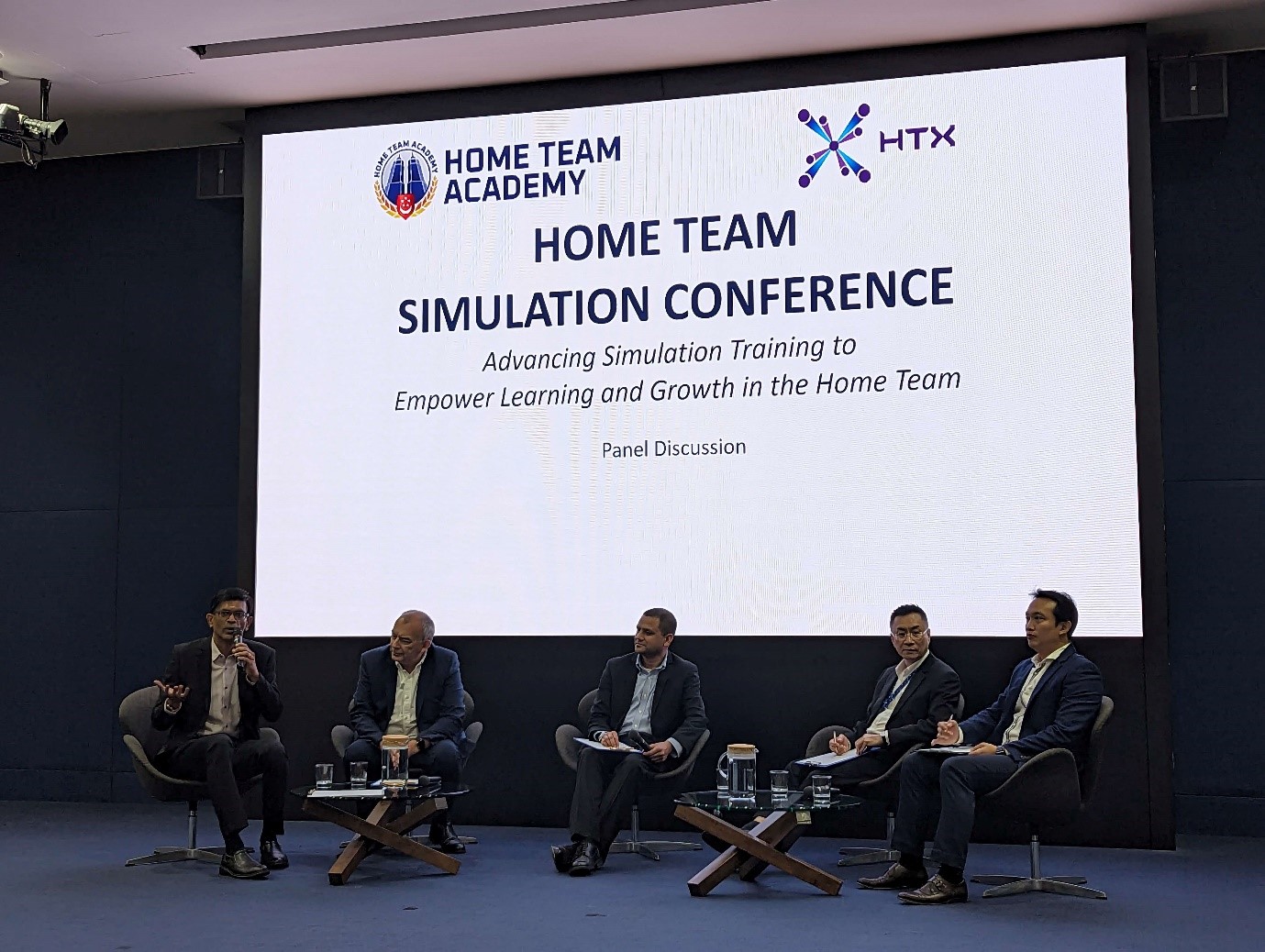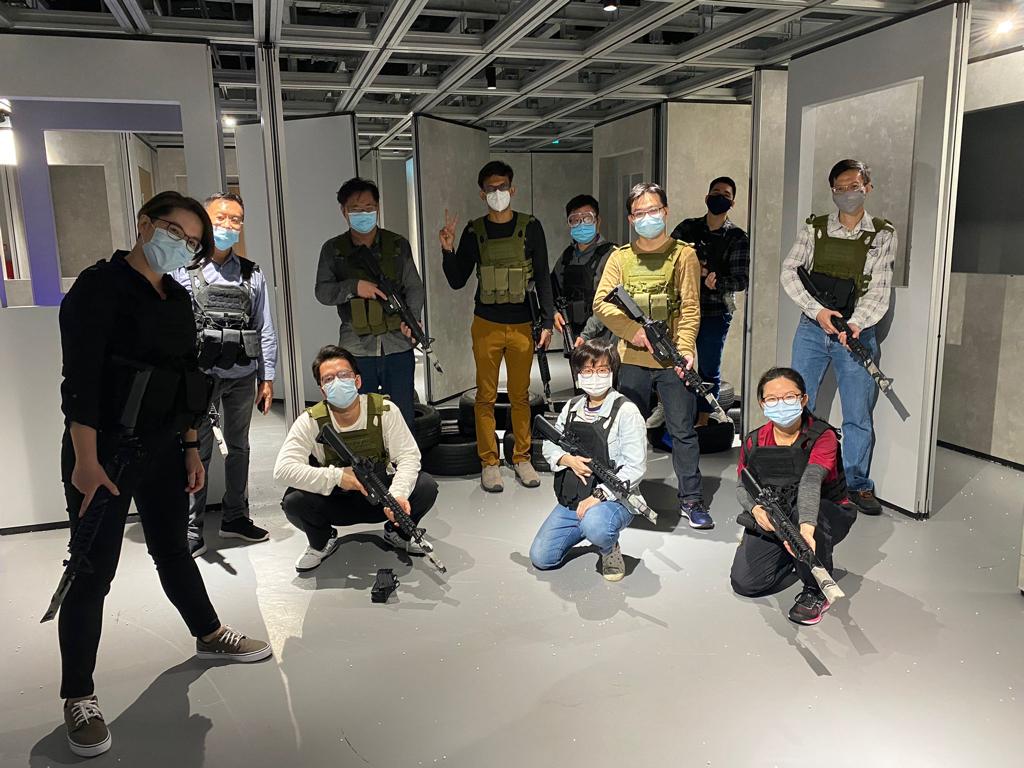.jpg?sfvrsn=b491e979_1) (Photo: Dr Saravana)
(Photo: Dr Saravana)
Before getting into the field of Human Factors, Dr Saravana was actually working on a different kind of living organism: animals.
He was previously a Research Scientist at A*STAR’s Bioengineering and Nanotechnology Institute back in 2006, and performed bioimaging and biosignal analysis of lab animals, such as transgenic rodents and mice, for pre-clinical drug discovery and screening as well as developing novel point-of-care medical diagnostic devices. Prior to that, he completed his PhD in Electrical and Computer Engineering at the National University of Singapore. His research then involved developing image processing and AI algorithms, models, and simulations for making prediction on cases as varied as air quality, diagnosis of infectious diseases, and timely detection of electrical train faults; nothing related to the human body or psyche.
Evidently, Human Factors – which involves the application of psychological and physiological principles to the engineering and design of products and equipment for humans – was not something he was originally trained in.
So, what made him step into the field of Human Factors?
A change of direction
It started when Dr Saravana decided it was time to experience a different aspect of research and joined the Ministry of Home Affairs (MHA) as Senior Assistant Director in the Office of Chief Science and Technology Officer (OCSTO) in 2013.
“It takes considerable time for research findings to make an immediate impact on the outside world. I was looking for something that was more immediately translatable to society, and that could impact the ground in a shorter time,” he says.
MHA was also pivoting more towards the field of science and technology then. “They were looking for somebody with a Human Factors background to address the workload and fatigue issues faced by frontline officers. Even though I didn’t fully fit the bill, I brought a fresh perspective to this problem. Human Factors was previously regarded as a subjective domain but I leveraged on my engineering background to quantitate it via sensors, simulation, and analytics,” he recounts.
Shortly after he joined MHA, the Human Performance Centre (HPC) was set up. The HPC optimises work processes, operational systems, and performance of Home Team officers through the application of Human Factors in training and operations. Thus, it was here in MHA that Dr Saravana started working in the field of Human Factors.
Joining the HTX family
When HTX was formed in 2019, Dr Saravana moved into the HFS CoE, led by Director Ying Meng Fai. The two of them were already working together in OCSTO, MHA since 2013 to help the Home Team conduct research on how to enhance the performance of frontline officers, improve their uniforms and ensembles, and develop more ergonomic workspaces.
Moving to HTX, the scope of their work expanded beyond Human Factors to include M&S, which is the pillar Dr Saravana currently oversees at HTX.
 Dr Saravana with Director Meng Fai (middle) and Terence Teng (left), the Lead Engineer at HFS. (Photo: Dr Saravana)
Dr Saravana with Director Meng Fai (middle) and Terence Teng (left), the Lead Engineer at HFS. (Photo: Dr Saravana)
One of the projects that Dr Saravana regards as his pride and joy is the research and training facility called Emergency Responders’ Fitness Conditioning and Enhancement Lab (EXCEL) jointly developed with SCDF where cutting edge research in human factors and simulation is conducted to enhance training and operations of SCDF first responders. Another project that he is also proud of is the Mixed Reality system for Bloodstain Pattern Analysis (BPA), developed in collaboration with SPF’s Criminal Investigation Department (CID) to train their forensic specialists. There is also the Virtual and Extended Reality Systems for firefighting, road traffic accidents, and management of HazMat incidents, developed in collaboration with SCDF.
“I’m proud of these projects because of the synergy and camaraderie that were demonstrated among those with whom I worked,” he says. “That’s the key ingredient for any project’s success: good teamwork.”
The understated value of Human Factors
Over the years, Dr Saravana’s work in M&S has crossed into both the fields of “hard” and “soft” sciences. Hard sciences, or natural sciences, are often used to refer to sciences such as physics, biology, and chemistry. Soft sciences, on the other hand, cover intangibles such as human behaviours, interactions, thoughts, and feelings, which Human Factors deals with.
Find your higher calling.
Dr Saravana acknowledges that there exists a divide of attitudes between the two sciences. “Human Factors seems a bit fuzzy to others since it is not something tangible that you can easily characterise and reduce into an equation or algorithm, and it’s not a technology like AI and robotics. It seems abstract as it is usually approached from a psychological and sociological angle. But there is a lot of quantitative data you can get in the research of human performance using M&S tools such as our in-house digital human twin modelling software and climatic chamber and thermal manikin system,” he argues.
In the early years of Dr Saravana’s work in Human Factors, he and Director Meng Fai actively connected with the Home Team Departments (HTDs) through small-group sharing sessions to socialise the idea of Human Factors and explain how it value-adds to Home Team operations. Those efforts are still in the works today, but it is clear that attitudes toward the importance of Human Factors have shifted.
Charting the progress of Human Factors
Earlier in July of this year, HFS CoE held a Human Factors Workshop to share about their work. They discussed potential projects with HTDs and shared how mock-ups and machine learning have been used for M&S. The workshop also emphasised that research in Human Factors augments and complements M&S for the design of equipment and technologies that help optimise the physical and cognitive performance of officers in operations.
The workshop received full-house attendance with many attendees giving feedback that they found it useful in helping them identify potential issues in their workplace that could be improved with Human Factors research.
Another of HFS’s efforts to socialise the idea of Human Factors was the inaugural Home Team Simulation Conference held on 6 July 2023. Titled “Advancing Simulation Training to Empower Learning & Growth in the Home Team”, the conference was jointly launched by HTX and the Home Team Academy (HTA) at the HTA headquarters. It saw 290 participants and distinguished guests attending, which was an overwhelming response of support beyond the HFS team’s expectations.
At the conference, international and local speakers shared their insights and ideas on how creating models for simulation training can help Home Team officers develop critical skills and prepare them in crisis management. Dr Saravana was a key member in the organising committee. He also chaired the Panel Discussion that followed the speech given by Director Meng Fai, who shared on both past and future efforts of the HFS CoE.
 Dr Saravana chairing the panel discussion at the conference. (Photo: Dr Saravana)
Dr Saravana chairing the panel discussion at the conference. (Photo: Dr Saravana)
Reflecting on the conference, Dr Saravana says he was pleased with the insights and ideas shared, and that he enjoyed reconnecting with colleagues and friends from the industry and academia.
“It was very heartwarming to see such a huge, positive response from HTX colleagues, HTD users, and our industry collaborators. The presentations and speeches were also useful in providing insight into the future tracks of M&S within the next five to 10 years. I think everyone benefitted. It’s something we will consider having on a more regular basis,” he says.
Director Meng Fai’s sharing on what HFS worked on over the past few years reminded Dr Saravana on how much progress they have made in their research and the tangible outcomes they have achieved in enhancing HT training and operations.
“It was then that I realised that we have come a long way. There is greater awareness now on what Human Factors is and its importance,” he says.
The human touch
Director Meng Fai’s recap also made Dr Saravana feel like he was walking down memory lane. It brought back a montage of moments that Dr Saravana shared with his colleagues in different settings. When it comes to his best memory at HTX, he says it is an accumulation of many. “It’s the people I’ve connected with that has made the experience at HTX memorable,” he says.
As Deputy Director, Dr Saravana has to regularly connect with the team he leads, and he describes his leadership style as one of being a servant-leader.
“I try to empower them, understand their pain points at work, and facilitate their personal growth. This requires constantly engaging with them so we can open up to each other and see each other on both a professional level and a human one.”
 Dr Saravana and his colleagues on a team retreat at HomeTeamNS Khatib. (Photo: Dr Saravana)
Dr Saravana and his colleagues on a team retreat at HomeTeamNS Khatib. (Photo: Dr Saravana)
His advice to the young STEM talents is this: “Find your higher calling. Be bold and try new things. The world is your oyster, and you have to find your pearl. There are many, but find the one that has your name on it.”
We are always seeking inquisitive and innovative individuals to co-create extraordinary solutions with us.
Join us to be at the forefront of the finest tech capabilities in the field! Join Us

